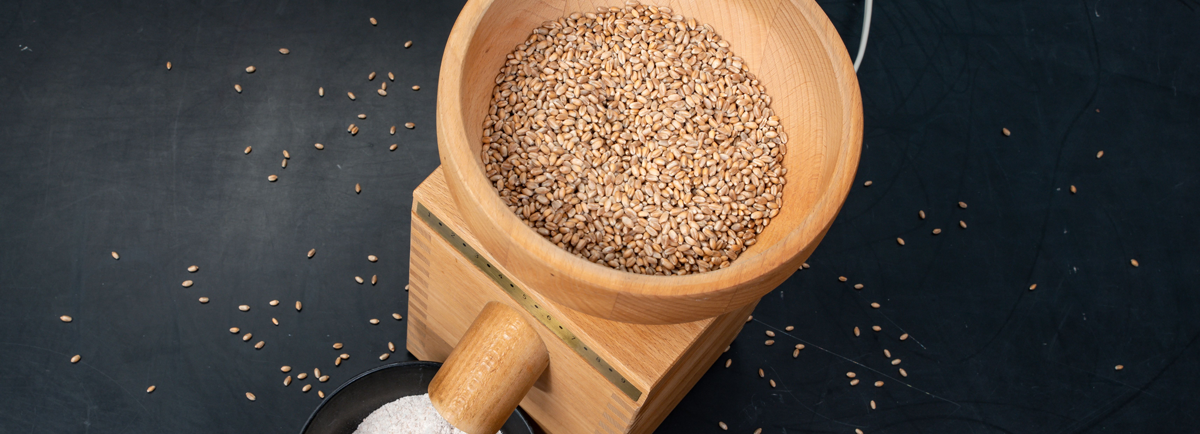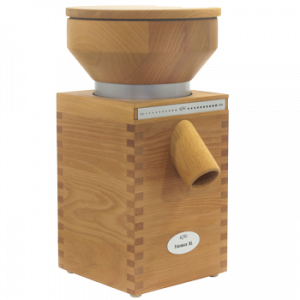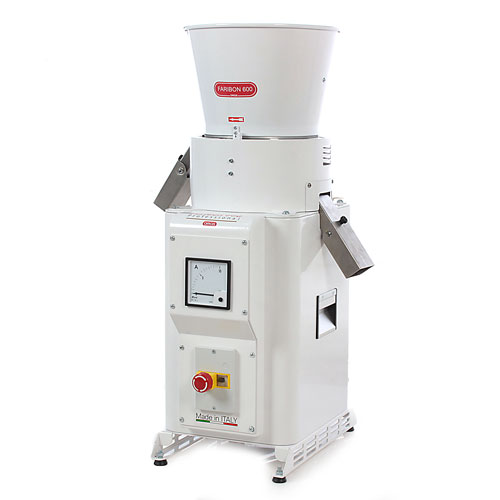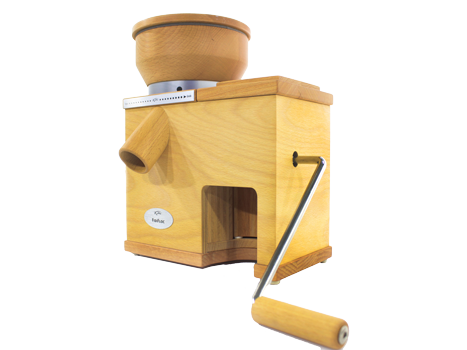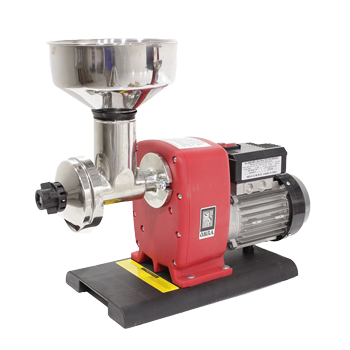A complete guide to purchasing the best flour mill, with all its advantages and main aspects.
The Complete Guide to help you choose the Best Flour Mill
by the Real Experts of Kitchen Equipment
CONTENTS
1. Introduction
Nowadays, it is becoming more and more difficult to accurately trace the origin and the whole processing that food undergoes before it reaches our tables. Food adulteration is a process that involves all kinds of food, including even the most basic ingredients of our cuisine. As a result, the white flour sold in supermarkets, but also the flour used in industry, is often of inferior quality due to various factors:
- the large grinders of industrial mills and intensive processing overheat the flour, depriving it of its main nutrients.
- the bran and wheat germ are removed, and only the endosperm is milled to give the flour its typical white colour and to prevent oxidation.
- after milling, chemicals such as chlorine are added to the flour to increase the bleaching effect and ensure a long shelf life.
Many people, driven by a desire to rediscover healthier foods, are deciding to buy products made from wholemeal flour. However, in most cases the most commercially available wholemeal flour is the result of misrepresentations: simply mixing ground bran with ordinary white flour produces a mixture with a mineral content that is legally classified as wholemeal flour.
If you wish to have an healthy and nutritious flour, there is no better and more cost-effective solution than to produce this valuable ingredient yourself, using a flour mill.
2. What is a domestic flour mill?
It is a small tool created to reproduce ancient mills with stone grinders to scale. As such, a tabletop flour mill will make it possible to grind any type of cereal, from wheat to barley, from maize to spelt.
Available on the market are both manual and electric flour mills. In both cases, the mill will retain the nutritional characteristics of the ground materials.
The principle that enables a mill to convert cereals into flour is based on the rotation of two circular units which, rubbing together, grind the material more or less finely. The ancient milling movement, which can be given to the grinders by human strength or by a motor, must also maintain a slow and constant rhythm.
At the heart of the process is the necessity to grind without producing heat. Temperature increases due to friction would soon compromise all the main beneficial components in cereals.
The primary purpose of these mills is to protect the flour itself from excessive pulverisation. Therefore, while in manual models the degree of fineness of the flour depends solely on the speed of movement given by the strength of the operator, in most of the electric models on the market it is possible to adjust the grain size of the milled product in advance.
3. What are the advantages of purchasing a flour mill?
Owning a flour mill offers a number of benefits. First and foremost, it is a space-saving machine that can grind a large number of hard and soft seeds, as well as spices, pulses and coffee. Above all, being able to produce wholemeal flour while retaining full control over the origin of the grain and the milling process, brings a whole range of advantages for oneself and the environment.
3.1 Personal benefits and convenience
- Milling your own flour at home will allow you to make bread, pizza and cakes using a final product rich in fibre, vitamins, antioxidants and very low in sugar.
- It will be possible to recover traditional flavours, giving new life to genuine products that can not be reproduced industrially.
- By buying cereals from trusted producers, not only will you contribute to the reduction of supply chains, but you will always be aware of the origin of the raw material and its cultivation methods. In addition, getting “zero mile” cereals can bring considerable economic benefits.
- The possibility of grinding the exact amount of flour you need with your own mill will ensure that it is always fresh and does not get wasted.
- A tool capable of processing such a variety of grains will give you the possibility to prepare your own food by mixing different flours according to your taste.
3.2 What types of flour can be made?
With the exception of oil seeds such as flax, poppy or sesame, there are no particular limits to the possibilities offered by a flour mill. Starting with the more classic barley, spelt and durum wheat seeds, this tool will perfectly grind maize, amaranth, oats, rice and buckwheat, as well as pulses such as chickpeas, broad beans and peas. For those who like to try special flours, the mill can also produce kamut, quinoa and spelt flour.
4. Manual or electric operation
The different mode of operation of the flour mill grinders primarily affects its yield. The output of a flour mill is its production capacity in relation to the processing time. Obviously, manual flour mills have a lower output. In fact, they are the less expensive models in the category, given the absence of any type of motor. By turning the traditional crank at a constant speed according to the desired degree of fineness, small quantities of flour can be produced easily and efficiently.
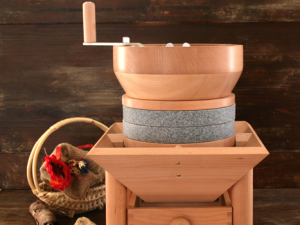
Manual grain mill 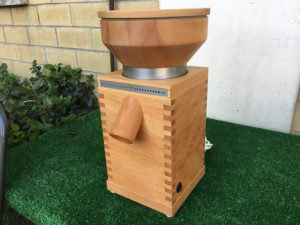
Electric grain mill
Electric mills, on the other hand, offer a yield that is proportional to the power of the motor fitted to the machine. The choice between the two operating modes therefore depends solely on your needs.
In addition, as already mentioned, electric mills generally have a power controller, which can be activated by simply rotating the flour mill hopper. This mechanism adjusts the speed at which the grinders move and thus the degree of fineness of the flour. However, it is important to be aware that too extensive a use of electric flour mills in the preparation of ultra-fine grain flour risks damaging the grinders due to the excessive friction with which they are forced to work.
5. Two different types of grinders
Flour mills can mount both traditional stone grinders and the more modern and innovative stainless steel grinders.
5.1 Stone grinders
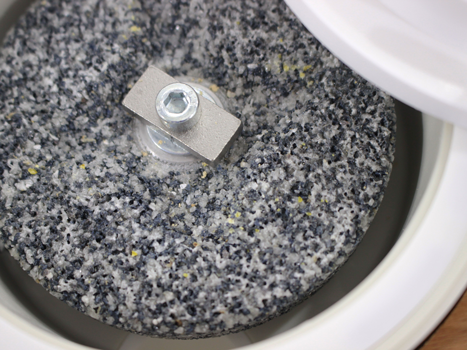
Stone grinders are made with minerals extremely resistant to pressure and friction force, in order to perform an efficient cold milling.
Hand crank flour mills use stones made of a mixture of magnesite and corundum. The latter is considered the hardest mineral found in nature, second only to diamond. The combination of these components allows to obtain a flour of excellent quality, at a very affordable price.
Electric mills, on the other hand, mount grinders in ceramic, more suitable to withstand prolonged use over time. The grinders are made by mixing the minerals, pressing them and finally cooking them at high temperatures. It should be noted that this process involves all-natural elements to make the grinders suitable for contact with food.
5.2 Stainless steel grinders
Stainless steel grinders are typically found in heavy-duty flour mills. Driven by powerful electric motors, they are capable of separating bran from flour in a single pass.
The milled product is immediately ready for use, with all its nutrients fully preserved. By properly adjusting the grain size, this type of grinder will be able to produce even very refined flours, up to “type 0”.
A flour mill with grinders made of tempered and rectified steel alloy is an inevitable choice in commercial activities such as pasta shops or bakeries, and in general in all those places where a milling tool capable of working for prolonged sessions is required.
6. Different types of machine body
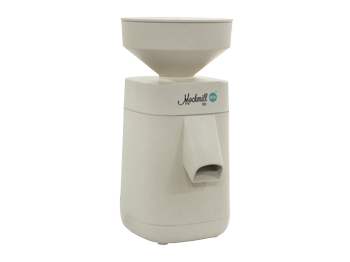
Plastic flour mill 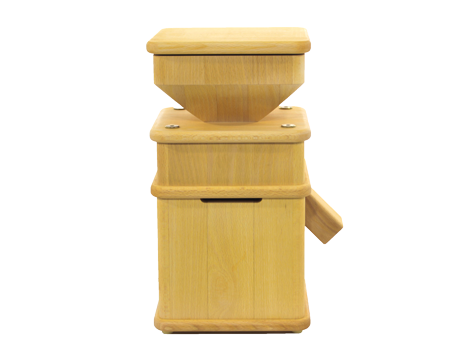
Wood flour mill 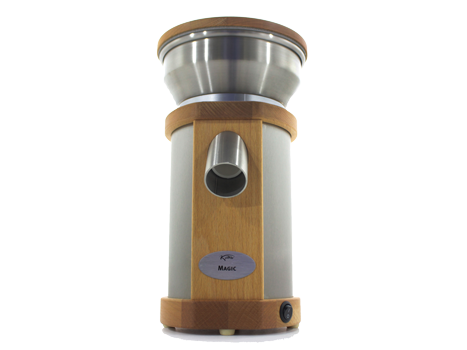
Wood and stainless steel flour mill 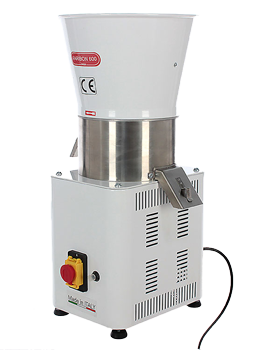
Metal flour mill
6.1 Plastic body
Plastic flour mills, with their simplicity of construction and attractive design, are an ideal solution for anyone wishing to have a domestic tool at an affordable price.
Made of arboblend bioplastic or lignin and cellulose fibre, these mills prove to be surprisingly stable and resistant over time, better than any artificial plastic. The natural origin of the construction materials makes these mills suitable for contact with the grains to be processed, without causing any health risk.
6.2 Wooden body
The pleasantly vintage look given by the wooden housing makes flour mills suitable for any type of kitchen style. A machine body made of wood – usually beechwood or birch – becomes even more valuable given that the components are made and finished by hand and then treated with organic vegetable oils.
The wooden flour mill is therefore the most popular and appreciated by anyone who wishes to start making their own flour, also thanks to its ease of cleaning: it is sufficient to unscrew the hopper and use a damp cloth on the inside of the machine.
6.3 Wood and stainless steel body
The uniqueness of flour mills built with this type of housing lies in the combination of the proven stability and durability of solid wood with the strength of stainless steel. Tradition and modernity come together to create an electric mill for domestic use, but with optimum performance and a long service life.
6.4 Metal body
The metal body is usually only found on heavy-duty flour mills. The high quality of the housing grants this product category an unmatched durability and performance level. These features, combined with stainless steel grinders and a servo-ventilated motor, make flour mills with metal body an obvious choice for any milling operation that requires an intensive and prolonged grinding rhythm over the years.
7. Electric motor
The production per minute of a flour mill, i.e. its production capacity in relation to processing time, depends primarily on the presence or absence of an electric motor to rotate the grinders. While manual flour mills offer a rather low output, for continuous grinding of large quantities of cereals, it is advisable to use a motor-powered flour mill.
An electric grain mill can produce between 100 and 500 grams of flour per minute. Obviously, the desired grain size will also influence the processing time.
Generally speaking, a low power flour mill usually comes with a motor of between 140 W and 250 W. The motor of an electric mill of medium power can be between 360 W and 600 W. The most powerful flour mills, on the other hand, can be fitted with electric motors of up to 3000 W.
8. Flaker mills
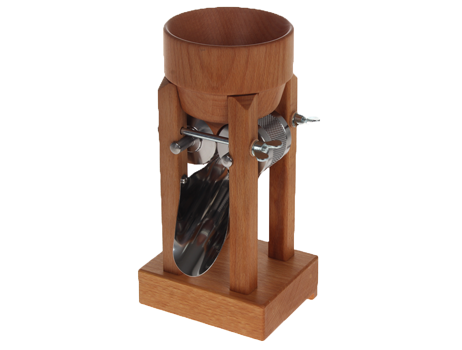
Flour mills and flaker mills are closely related to each other. Anyone who likes to have oatmeal or cornflakes for breakfast might find it useful to make their own at home.
In fact, home-made flakes differ considerably from industrially produced flakes, as the latter are first treated with steam and then pressed with heat. This process ensures that the flakes remain unaltered, but means that they can not be counted as fresh products.
Available on the market in both manual and electric models, flaker mills, on the other hand, give the possibility to quickly produce flakes when needed, ready to eat and intact in both quality and nutritional properties.
The operating principle of these small tools – which can be made of wood and steel or wood and aluminium – is very similar to that of flour mills. So whether it a hand crank flaker mill or an electric flaker mill, the steel grinders they are fitted with will turn any cereal or spice into flakes.
8.1 Flour mills with flaker
Electric wooden mills with flaker are capable of combining two optimal functions for daily nutrition.
With the purchase of a single product, in fact, you will have both a flour mill suitable for grinding all kinds of cereals, pulses, coffee and, at the same time, a flaker mill to prepare your own breakfast.
Milling and flaking are carried out by separate motors, in accordance with the two different methods of processing. The processing speed is variable according to your needs.
9. The grain grinder
The grain grinder represents the technological evolution of a flour mill and consists of a household piece of machinery capable of making different types of flour in complete autonomy.
It is an extremely solid and sturdy 400 W electric appliance that can be used to process any type of cereal, spice or coffee. The machine body and gears are made of sturdy nylon with high mechanical strength.
The grain grinder is designed to be used on a table, in a practical and functional way. This appliance, just like a common flour mill, allows you to set four different degree of fineness to meet the needs of every type of cuisine.
10. Major brands
Before proceeding with the purchase of a flour mill, it is advisable to move towards the most professional and well-known brands in the world of kitchen machinery. Choosing a reliable manufacturer provides the user with the certainty of a safe and efficient machine to carry out work in a smooth and trouble-free manner.
The recommended brands for both hobby and heavy-duty models are: Komo, Hawos, Omas, Mockmill and Eschenfelder.
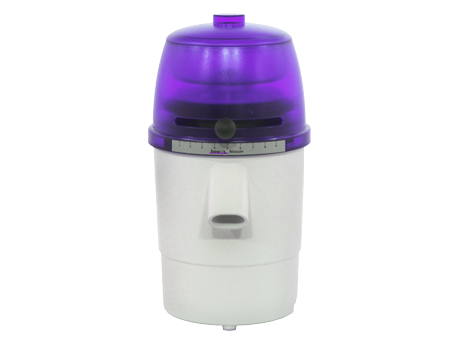
Hawos flour mill 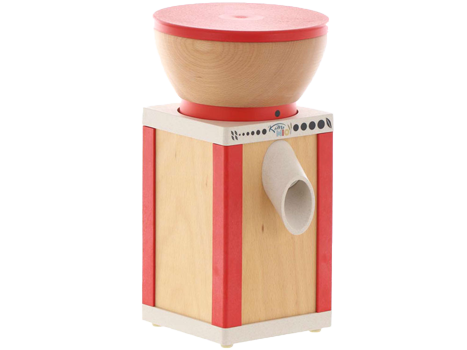
Komo flour mill 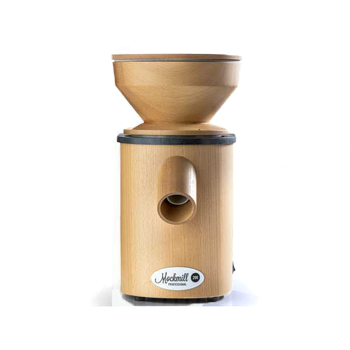
Mockmill flour mill 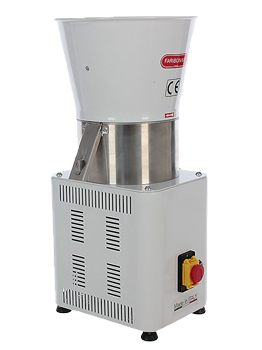
Omas flour mill 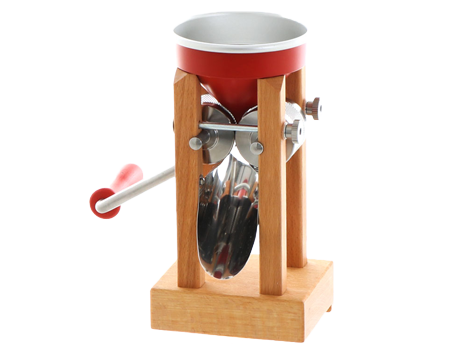
Eschenfelder flaker mill



